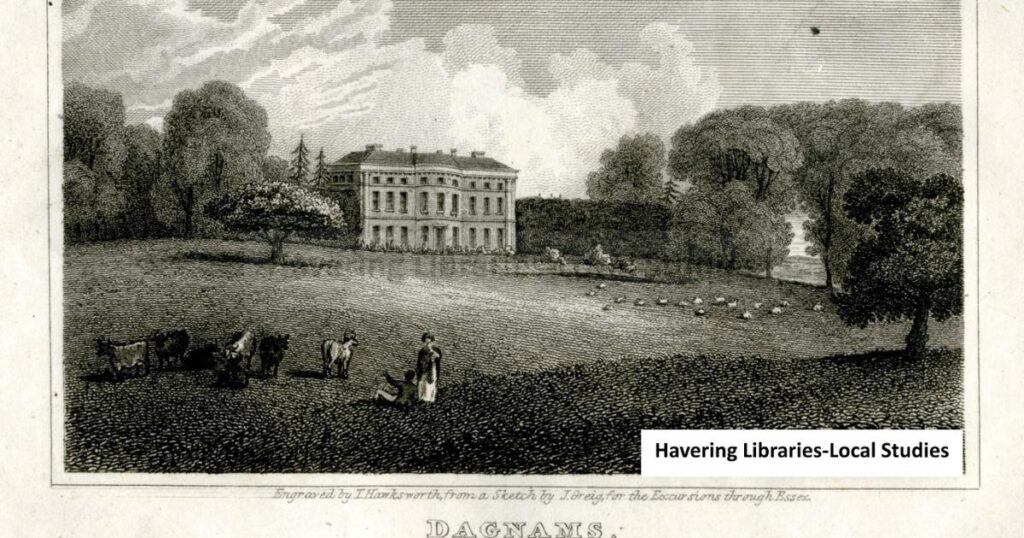This week, the Recorder is looking back at the history of Dagnam Park – a green space in Harold Hill locally known as The Manor due to its past.
It was initially the site of the Dagnams estate, home to a manor house which was bought by merchant Richard Neave in 1772.
The house was once visited by famous diarist Samuel Pepys, but was pulled down within four years of Neave buying the estate and replaced with a Georgian mansion.
An engraving dating before 1772, showing Dagnams Park with the original manor house (Image: Havering Libraries-Local Studies)
READ MORE: The park near Romford that was once home to a huge mansion
Over the next century, the Dagnams Park estate swelled to 1,600 acres and was passed down through the Neave generations.
According to Havering Council, the park and gardens had been laid out in the late 17th or early 18th century, but famous landscape gardener Humphry Repton is reported to have redesigned the gardens’ layout in 1812.
Historian Brian Lingham wrote in his book History of Harold Hill and Noak Hill that the Dagnams mansion had three storeys with six rooms on each floor.

This included billiard rooms, study rooms, a nursery, schoolroom and main bedrooms.
Before the First World War, the Neave family employed more than 40 servants and the only other work in the area was on the estate farms.
This meant that, even when the farms were sold in 1919, the Neaves remained important figures in the village and were well thought of, according to Havering Council.
READ MORE: Havering Country Park once home to palace gifted by King Henry VIII
Although some of the estates were sold after the war, the Neaves family remained at Dagnams into the 1940s.

Its sale was then agreed with London County Council (LCC), before a compulsory purchase order was issued in 1946 for the rest of the land – which would become the LCC Harold Hill estate.
The LCC had planned to save the mansion, but stated it could find no use for the building – and in 1950 it was demolished.
There are little clues left as to where Dagnams was located in the park – other than fence posts, some foundations and the floor of the stables – but the family and their house are remembered in street names in Harold Hill.




